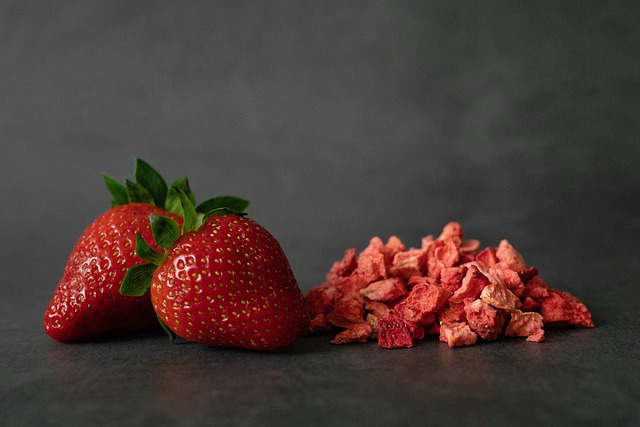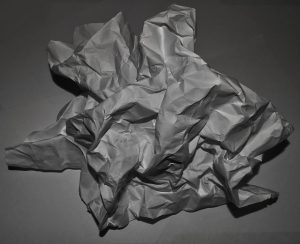Skin aging is a gradual process influenced by various factors, primarily collagen and elastin degradation due to sun exposure, pollution, smoking, and age. Non-invasive techniques like IPL, RF, ultrasound, and lasers, along with topical creams containing retinol, vitamin C, and hyaluronic acid, offer effective wrinkle reduction methods. Laser therapy targets deep layers for collagen stimulation and improved elasticity. Surgical options, such as facelifts, provide dramatic results but come with recovery times and risks. A consistent skincare routine, including gentle cleansing, moisturizing, and gradual retinol introduction, is crucial at home. Professional treatments should be performed safely in sterile settings to minimize side effects like redness and swelling.
“Unveil your skin’s radiant youth with our comprehensive guide to skin tightening anti-aging treatments. Skin aging is a natural process, but wrinkles don’t have to define your look. Explore a range of non-invasive methods from topical creams and laser therapy to surgical options for dramatic results. Learn how to prevent and minimize wrinkles at home while understanding the safety aspects and considerations before choosing your ideal wrinkle reduction treatment.”
Understanding Skin Aging and Wrinkle Formation

Skin aging is a natural process that begins early, often invisible to the naked eye. Over time, various factors lead to the formation of wrinkles and loss of skin elasticity. The dermis, the skin’s underlying layer, plays a significant role in supporting the epidermis and providing structure. As we age, collagen and elastin fibers, responsible for maintaining skin firmness, gradually degrade and produce fewer new ones. This degradation is accelerated by environmental factors like sun exposure, pollution, and smoking, all of which contribute to wrinkles and fine lines.
The formation of wrinkles can also be attributed to gravitational pull, muscle movement, and loss of moisture. These factors cause the skin to sag, resulting in deep wrinkles and a less youthful appearance. Understanding these mechanisms is crucial for effective anti-aging strategies, focusing on methods that stimulate collagen production, protect existing collagen, and address specific causes of wrinkle formation for optimal wrinkle reduction.
Non-Invasive Methods for Wrinkle Reduction

Non-invasive methods have emerged as a popular choice for those seeking effective wrinkle reduction without the need for surgery or extensive recovery periods. These techniques leverage advanced technologies to target and smooth out fine lines and wrinkles, offering a safer and more comfortable alternative. One prominent example is intense pulsed light (IPL) therapy, which uses specific wavelengths of light to stimulate collagen production and improve skin texture. Another innovative approach involves radiofrequency (RF) energy, which heats the deeper layers of the skin, causing collagen tightening and enhancing its elasticity.
Ultrasound and laser treatments are also part of this non-invasive arsenal. Ultrasound devices send high-frequency sound waves into the skin, encouraging the formation of new collagen and elastin fibers. Lasers, on the other hand, use concentrated light energy to penetrate the skin, breaking up pigmented spots and stimulating a natural healing response that can reduce wrinkles and improve overall skin tone. These modern methods provide individuals with effective ways to combat aging, allowing them to achieve a more youthful appearance while maintaining comfort and minimal downtime.
Topical Creams and Serums: Active Ingredients for Youthful Skin

Topical creams and serums are a popular choice for those seeking wrinkle reduction and rejuvenated skin. These products, when formulated with potent active ingredients, can offer significant anti-aging benefits. Common actives include Retinol, known for stimulating collagen production and improving skin texture, and Vitamin C, which brightens the complexion and protects against environmental damage. Hyaluronic acid is another powerful hydrator, drawing moisture to the skin’s surface, resulting in a plumper, smoother appearance.
Each active ingredient plays a unique role in addressing various signs of aging. For instance, retinol encourages cell turnover while vitamin C neutralizes free radicals, and hyaluronic acid provides intense hydration. Combining these ingredients in a well-formulated serum or cream can deliver powerful anti-aging results, leaving skin looking and feeling youthful.
The Power of Laser Therapy in Skin Tightening

Laser therapy has emerged as a powerful tool in the world of skin tightening and anti-aging treatments, offering significant advantages for those seeking youthful-looking skin. This non-invasive procedure utilizes specific wavelengths of light to stimulate collagen production and improve skin elasticity. By targeting deep skin layers, laser technology can effectively reduce the appearance of wrinkles, fine lines, and even stretch marks. The result is a noticeable improvement in skin texture and tone, leaving individuals with a more firm and rejuvenated complexion.
One of the key benefits of laser therapy is its ability to promote collagen regeneration. Collagen is a protein that provides structure and strength to our skin, and as we age, its production naturally decreases. Laser treatments encourage the body’s natural healing process by stimulating fibroblasts, the cells responsible for collagen synthesis. This leads to enhanced wrinkle reduction and improved skin firmness over time. Additionally, laser therapy can be tailored to different skin types and concerns, making it a versatile option for individuals seeking effective and safe anti-aging solutions.
Surgical Options for Advanced Skin Rejuvenation

For those seeking more dramatic and long-lasting results in skin tightening and wrinkle reduction, surgical options offer advanced rejuvenation techniques. Procedures like facelift surgery target loose skin and restore a more youthful appearance by tightening muscle and tissue. Similarly, neck lifts focus on addressing sagging skin and defining jawlines, reducing the visibility of age-related changes. These surgeries provide significant improvements but come with recovery periods and potential risks, so careful consideration and expert consultation are essential.
In addition to conventional facelift techniques, newer surgical approaches like thread lifts and plasma rich platelet (PRP) treatments offer less invasive alternatives for wrinkle reduction. Thread lifts use specialized threads to lift and tighten skin, while PRP therapy utilizes a patient’s own blood to stimulate collagen production, leading to improved skin texture and reduced fine lines. These modern methods are often sought by individuals who desire substantial improvements without extensive downtime associated with traditional surgeries.
At-Home Skincare Routines for Preventing and Minimizing Wrinkles

Maintaining a consistent skincare routine is key to preventing and minimizing wrinkles. At-home skincare plays a significant role in the wrinkle reduction process, allowing individuals to take proactive measures against aging skin. A simple yet effective routine can include cleansing your face twice daily with gentle cleaners, followed by applying hyaluronic acid or a moisturizer rich in antioxidants. These products help hydrate the skin, boost elasticity, and protect from environmental damage—all crucial factors for keeping wrinkles at bay.
Additionally, incorporating retinol into your evening regimen can be highly beneficial. Retinol is a form of vitamin A that stimulates collagen production, improves skin texture, and reduces fine lines and wrinkles over time. However, it’s essential to introduce retinol gradually and use it consistently to avoid potential irritation. Always remember to moisturize after retinol application to enhance its effects and soothe the skin.
Safety, Side Effects, and Recovery: Considerations Before Treatment

Before undergoing any skin-tightening treatment, it’s crucial to prioritize safety and be aware of potential side effects. Anti-aging procedures like wrinkle reduction techniques should always be performed by qualified professionals in a sterile environment to minimize risks. Common concerns include temporary redness, swelling, and minor discomfort during the procedure. In rare cases, more severe reactions or complications may arise, such as skin irritation, infection, or changes in skin texture.
The recovery period varies depending on the treatment method, but patients can generally expect some downtime. It’s essential to follow post-treatment instructions diligently, including using recommended topical care and avoiding strenuous activities for a specified time. Regular check-ins with your dermatologist are vital to monitor progress, address any concerns, and ensure optimal healing, leading to a more youthful and rejuvenated appearance without compromising safety.
